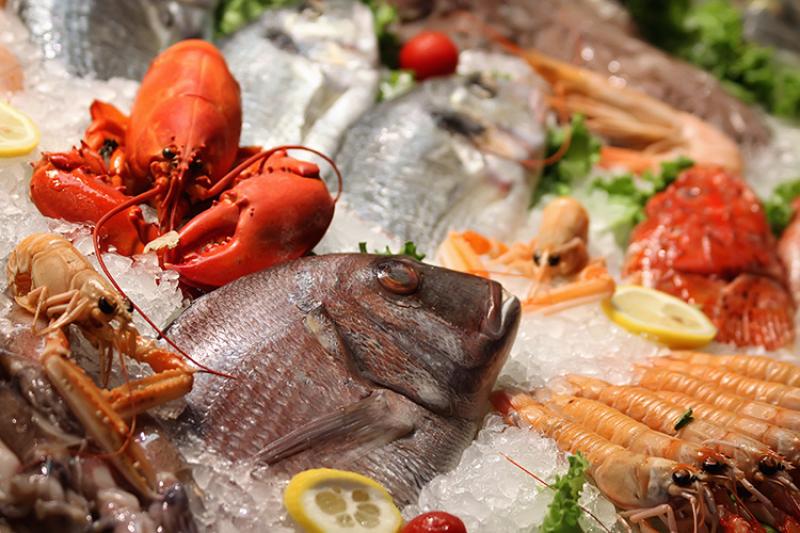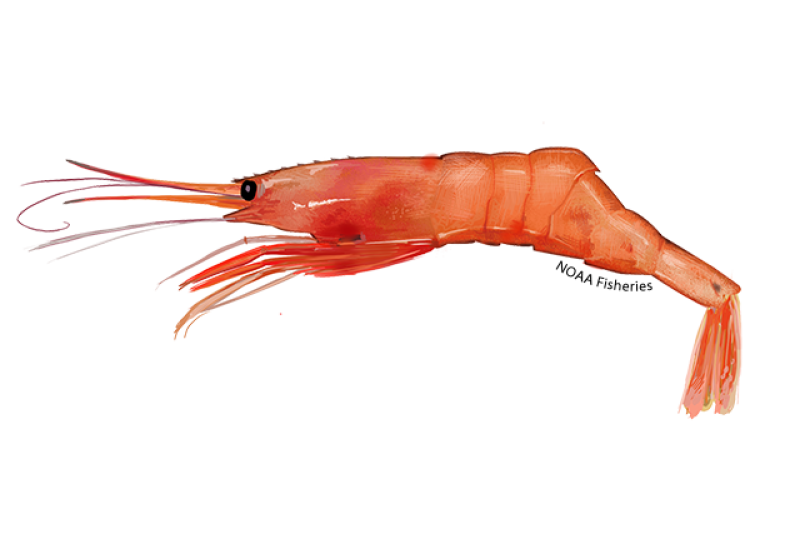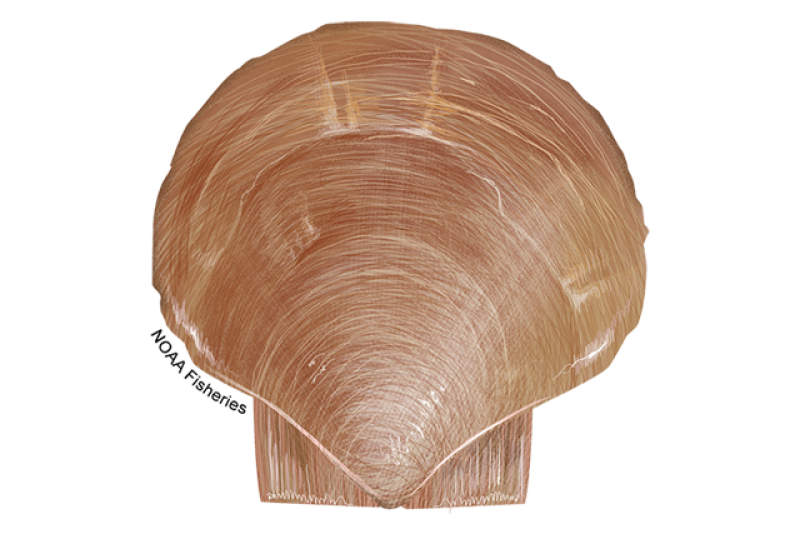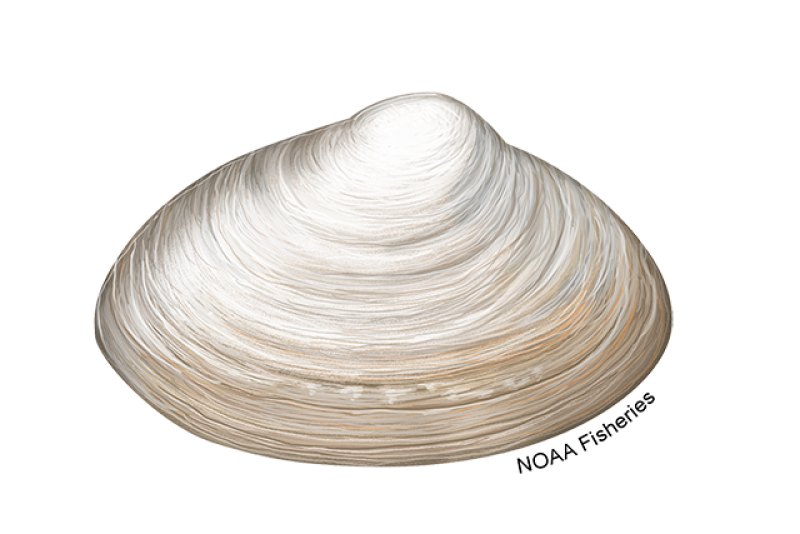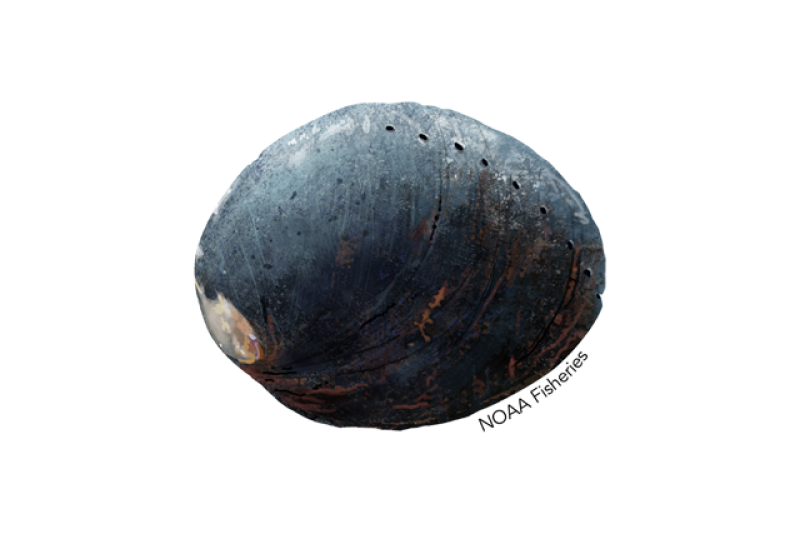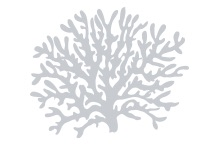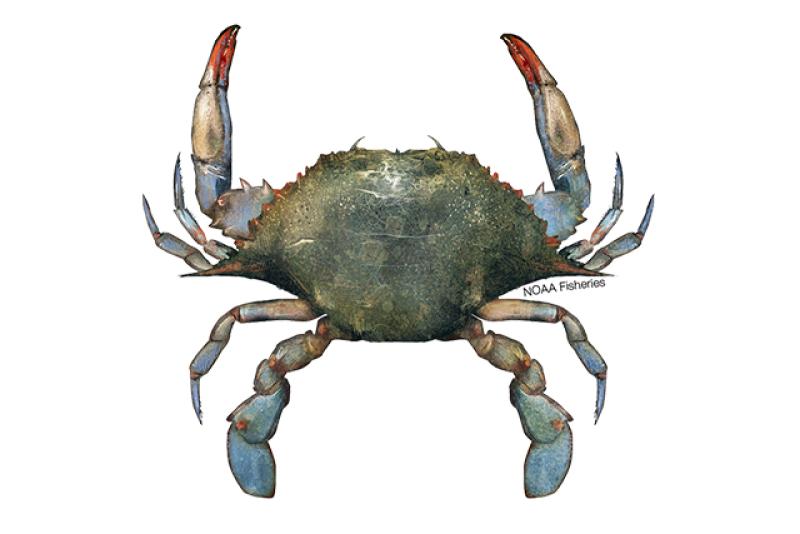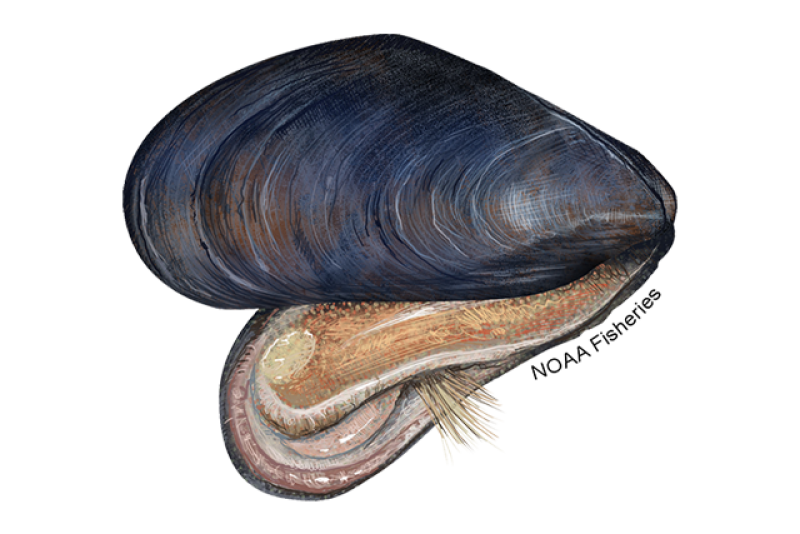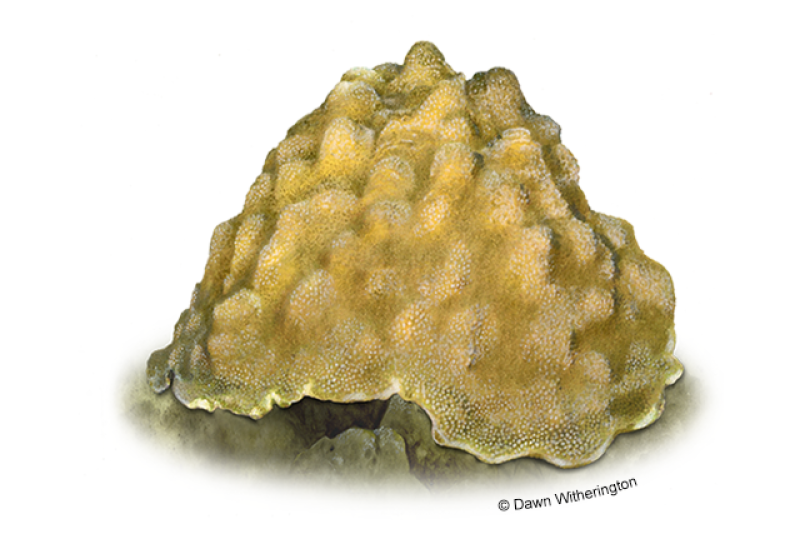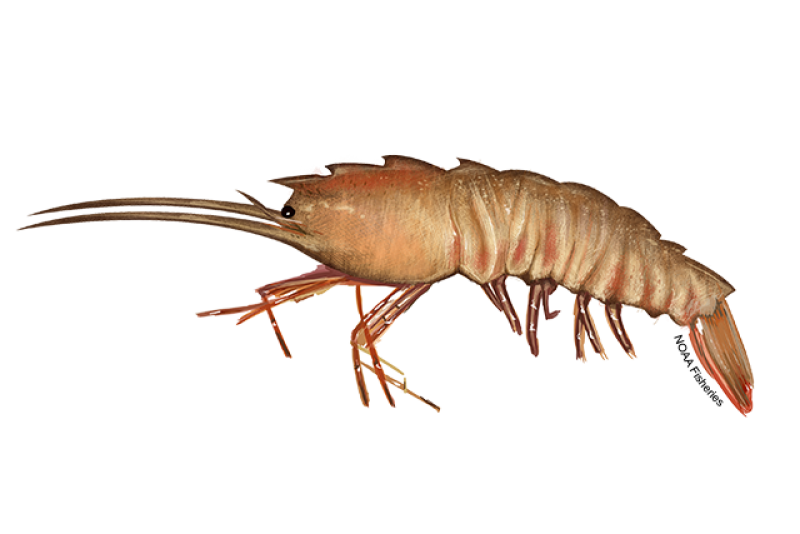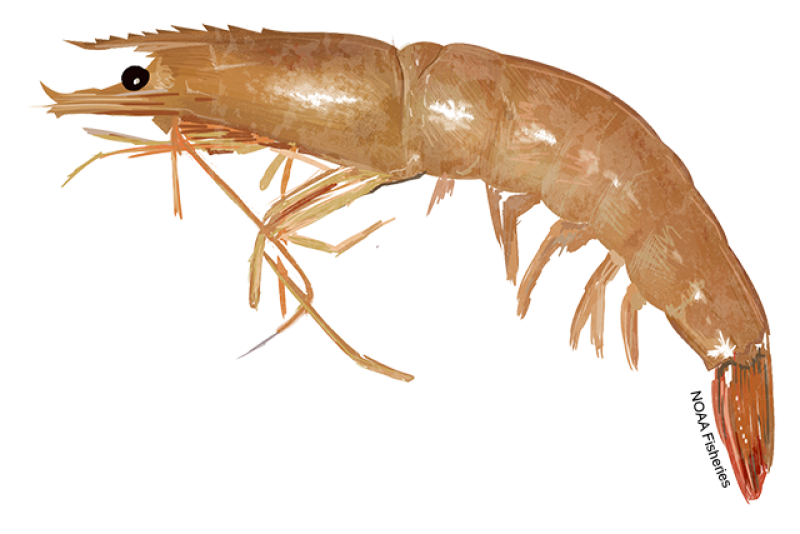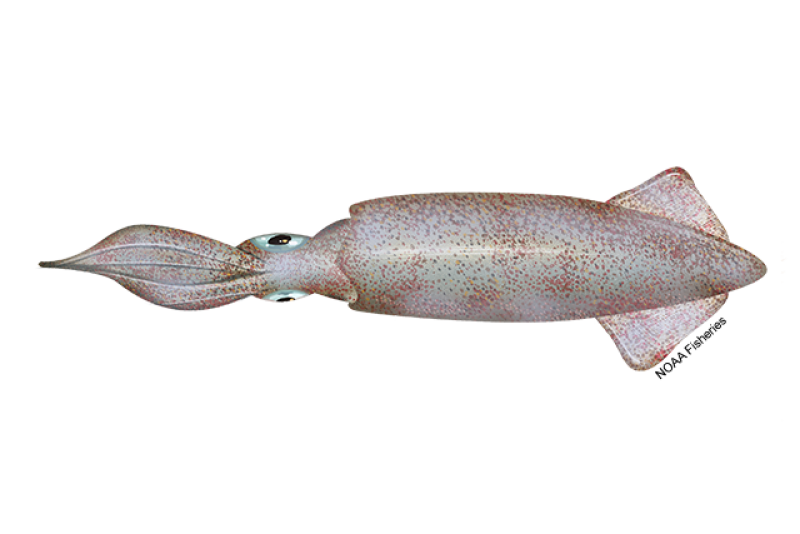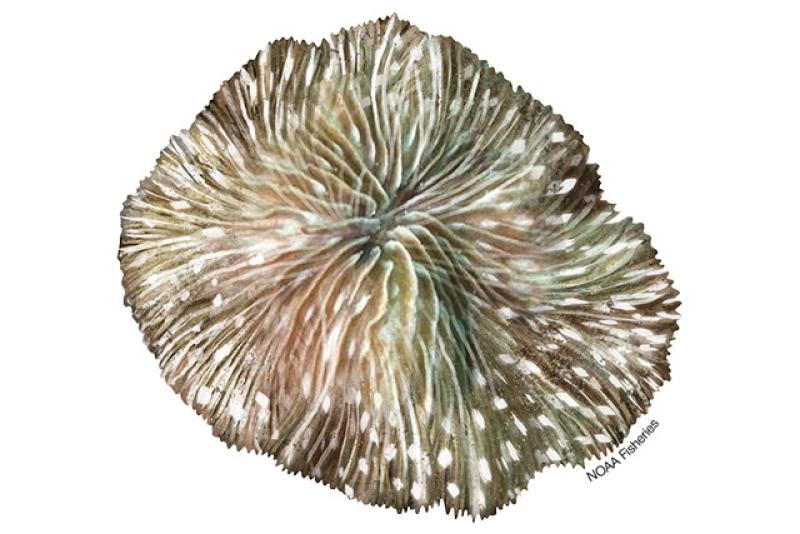From crabs to octopuses, clams to marine worms, invertebrates play a significant role in ocean ecosystems. Many are important prey for fish, marine mammals, and humans. Others, such as corals and oysters, create essential habitat for marine species.
NOAA Fisheries is responsible for the sustainable management of many species of invertebrates—including white shrimp, Alaska snow crab, and Quahog clam—commonly harvested for human consumption. We are also responsible for protecting invertebrate species listed under the Endangered Species Act such as white abalone and elkhorn coral.
Invertebrates are the most diverse group of animals in the ocean. Some common marine invertebrates include mollusks, crustaceans, and corals.
Mollusks are a category of invertebrates with over 50,000 known species. They are soft-bodied animals that may have a hard external shell (formed by secreting calcium carbonate), a hard internal shell, or no shell at all. Mollusks include abalone, conch, oysters, and clams, as well as octopus and squid.
Crustaceans are a subcategory of invertebrates closely related to insects and spiders. They typically have a body covered with a hard shell or crust. Crustaceans include shrimp, krill, lobsters, and crabs.
Corals are known as colonial organisms because many individual creatures live and grow while connected to each other. The tiny, individual organisms that make up large coral colonies are called coral polyps. Stony, shallow-water corals—the kind that build reef habitat—are one type of coral. There are also soft corals and deep sea corals that live in dark, cold waters.
Species News
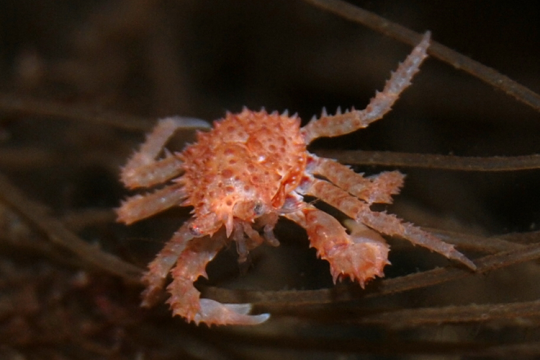 Underwater photograph of a juvenile red king crab. Credit: NOAA Fisheries/Chris Long
Underwater photograph of a juvenile red king crab. Credit: NOAA Fisheries/Chris Long
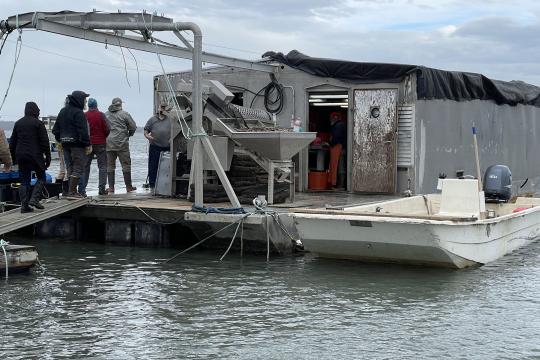 A floating operations wharf with an oyster tumbler. Inside, workers remove barnacles from the oysters before they are graded and counted by an Oystek oyster grading machine. A solar-powered FLUPSY is attached to the wharf. During the 2024 Northeast Aquaculture Conference and Expo, Dale Leavitt, formerly of Roger Williams University, led a tour of Blue Stream Shellfish, which has been expanding in Fairhaven, Massachusetts. Credit: Lynn Fantom
A floating operations wharf with an oyster tumbler. Inside, workers remove barnacles from the oysters before they are graded and counted by an Oystek oyster grading machine. A solar-powered FLUPSY is attached to the wharf. During the 2024 Northeast Aquaculture Conference and Expo, Dale Leavitt, formerly of Roger Williams University, led a tour of Blue Stream Shellfish, which has been expanding in Fairhaven, Massachusetts. Credit: Lynn Fantom
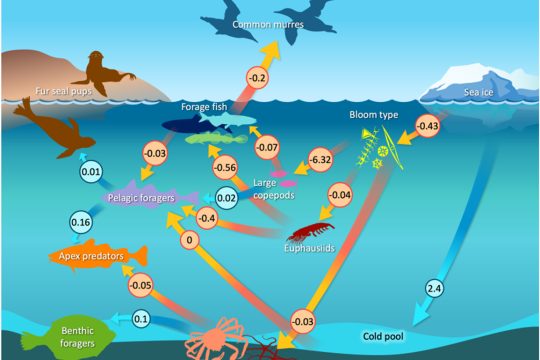 This is a path diagram for the Bering Sea and Aleutians Islands marine ecosystem. It shows linkages between ecosystem variables. Arrows correspond to suspected relationships. An arrow pointing from X to Y indicates that a change in X is estimated to cause a change in Y. The number next to each arrow shows the estimated magnitude of the change (red arrows indicate a negative change and blue arrows indicate a positive change).
This is a path diagram for the Bering Sea and Aleutians Islands marine ecosystem. It shows linkages between ecosystem variables. Arrows correspond to suspected relationships. An arrow pointing from X to Y indicates that a change in X is estimated to cause a change in Y. The number next to each arrow shows the estimated magnitude of the change (red arrows indicate a negative change and blue arrows indicate a positive change).
Multimedia
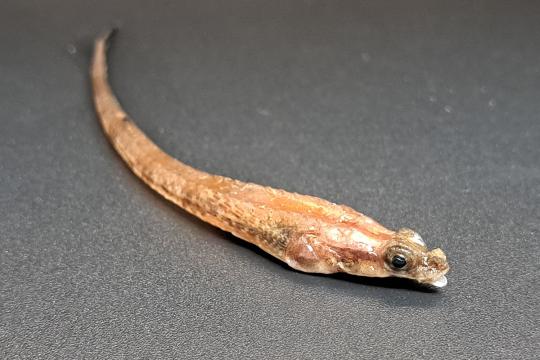
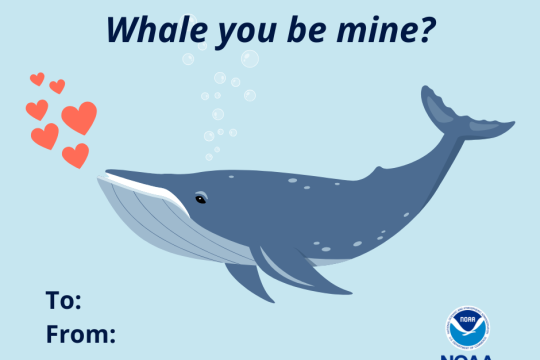
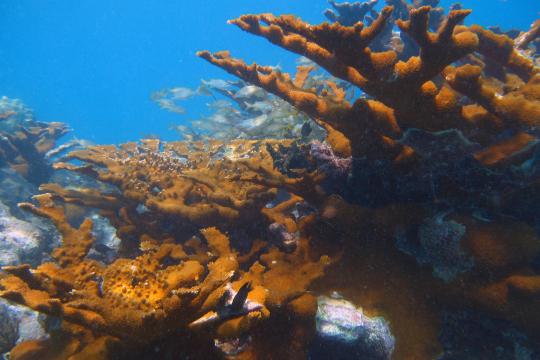 The branches of fast-growing elkhorn coral provide important habitat for fish. Populations of this iconic coral have declined across the Caribbean due to disease, bleaching and storms. Credit: NOAA
The branches of fast-growing elkhorn coral provide important habitat for fish. Populations of this iconic coral have declined across the Caribbean due to disease, bleaching and storms. Credit: NOAA
Research
Understanding the Health Of Long Island Sound's Oyster Beds
We are measuring the health of Long Island Sound’s oysters to guide restoration.
Passive Acoustic Research in the Atlantic Ocean
Marine mammals and many fish produce and receive sound in the ocean. In an environment where vision is limited, hearing is one of the most important senses. These animals rely on sound for navigating, socializing, establishing dominance, attracting…
State of the California Current Ecosystem in 2021: Winter is coming?
Scientists evaluate whether physical and biological conditions in the California Current Ecosystem…
Monitoring the Ecosystem in the Northeast
Collect, Distribute, and Analyze: Our long-term ecosystem data (hydrography, ocean chemistry, plankton) and analyses feed research into everything from North Atlantic Right Whales to stock assessments. Collaborate: We work closely with fishing…
Understanding Sustainable Seafood
Well-managed wild-capture fisheries and environmentally responsible marine aquaculture play an increasingly important role in our food supply, our health, and the environment.
